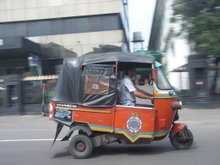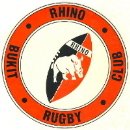
Mobile HF Loop Antennas
This article has been adopted from information at the Stealth Telecom Ltd. website by approbation of the author.
Radio Amateurs most often use inductively-loaded vertical whip antennas in HF mobile applications, but is there a better alternative despite the long popularity of vertical whips? This article describes principles involved in design of the Stealth Telecom Ltd. Type ST940B NVIS (Near Vertical Incidence Skywave) loop antenna system. It also provides useful information about the nature of HF communications.
Theory of operation The ST940B antenna utilizes a Very Small Closed Tuned Loop with aperture dimensions less than 0.1λ compared to wavelength. That type of antenna often is referred to as a Magnetic Loop Antenna.
It differs from short vertical whip antennas in that the reactive component of its impedance has the opposite polarity, so that it can be compensated by a capacitor rather than an inductor. The loop radiator is effectively a single turn inductor that is continuously tunable throughout its useful frequency range by means of a remotely-adjustable variable capacitor.
The feed impedance and efficiency of such a loop mainly depends on its surface conductivity. The antenna has low, typically <10m>
E=Rr/Rt
where Rr = radiation resistance and Rt = total resistance of the tuned circuit. It therefore is necessary to minimize the radiating element resistance by using a highly-conductive conductor. It also is necessary to use a low-loss capacitor to minimize losses in the reactance-compensation element. If these conditions are fulfilled, high RF current will flow in the loop and it will have high selectivity and a high quality factor (Q-factor) that is typically 10 to 20 times higher than the Q-factor of traditional antennas.
The RF currents and voltages in a loop antenna are multiplied by its Q-factor. If the ST940B antenna is fed by 100-watt radio transmitter, loop RF current can reach 30-50 Amperes and loop RF voltage can reach 5000-7000 Volts. That extraordinarily high voltage necessitates use of a high-voltage, low-loss vacuum variable tuning capacitor. It is remotely adjusted to resonance by means of a precision stepper motor, because tuning of the high-Q antenna circuit is very sharp.
Once the mechanical issues are overcome, the narrow bandwidth of the tuned antenna circuit turns to be an advantageous feature as it helps to minimize unwanted harmonics in the emitted signal and to increase the signal/noise ratio when receiving.
A small tuned-loop antenna, due to its low-impedance closed-loop circuit, tends to be less sensitive to capacitively-coupled local noise sources, such as capacitively-coupled interference from nearby high-voltage power lines. Because of that, it can provide excellent reception under conditions where reception with traditional whip antennas is noisy or completely impossible.
Loop Antenna Modeling The ST940B Antenna System is a version of a Magnetic Loop Antenna (MLA) known as an ElectroMagnetic Ground-Plane Loop (EMGL). It also sometimes is called a half-loop antenna (partial-loop would be more descriptive, because the physical loop conductor forms more than half the total loop circuit), because part of the loop circuit includes conduction paths through a ground plane.
A simplified diagram of a typical full-loop antenna is shown in Figure 1 below.

Figure 1 - Full Loop

Figure 2 - "Half Loop"
The "half-loop" shown in Figure 2 is electrically similar, but easier to physically install on a vehicle. Furthermore, the ground plane helps to form a special radiation pattern that improves performance.
The full-loop in Figure 1 is excited by means of an inductively coupled smaller loop that connects to the coax feed-line. The "half-loop" in Figure 2 also could be fed that way, but the alternative shunt-feed method that is shown provides more uniform impedance matching between the transmitter output and the antenna across a wider range of frequencies. The shunt feed also is easier to implement physically in a mobile antenna. (The shunt-feed shown in Figure 2 often is referred to as γ-matching - "gamma matching")
The performance of a "half-loop" antenna can be modeled by means of the method of moments which allows for the precise definition of RF currents in antenna elements and the obtaining of the resulting radiation pattern, antenna gain, and antenna impedance characteristics. Figure 3 shows a 3-D wire model of the ST940B antenna constructed with the aid of the EZNEC 4 CAD modeling program.

Figure 4 shows the calculated 3-D RF radiation pattern produced by the antenna. The radiation pattern has less than 1 dB minimas in the horizontal plane and has only one slope directed upward in vertical plane. Therefore, except in the direction toward ground, the radiation shape approximates a sphere. An antenna that radiates almost equally in all directions obviously has a desirable pattern for use on moving vehicles that may frequently change course and head in any random direction.

In the vertical plane the radiation maximum is concentrated between 60 and 90 degrees. The combination of high vertical-angle and horizontal omnidirectional radiation makes the radiation pattern of this antenna ideal for typical HF mobile NVIS applications.

In the vertical plane the radiation maximum is concentrated between 60 and 90 degrees. The combination of high vertical-angle and horizontal omnidirectional radiation makes the radiation pattern of this antenna ideal for typical HF mobile NVIS applications.












